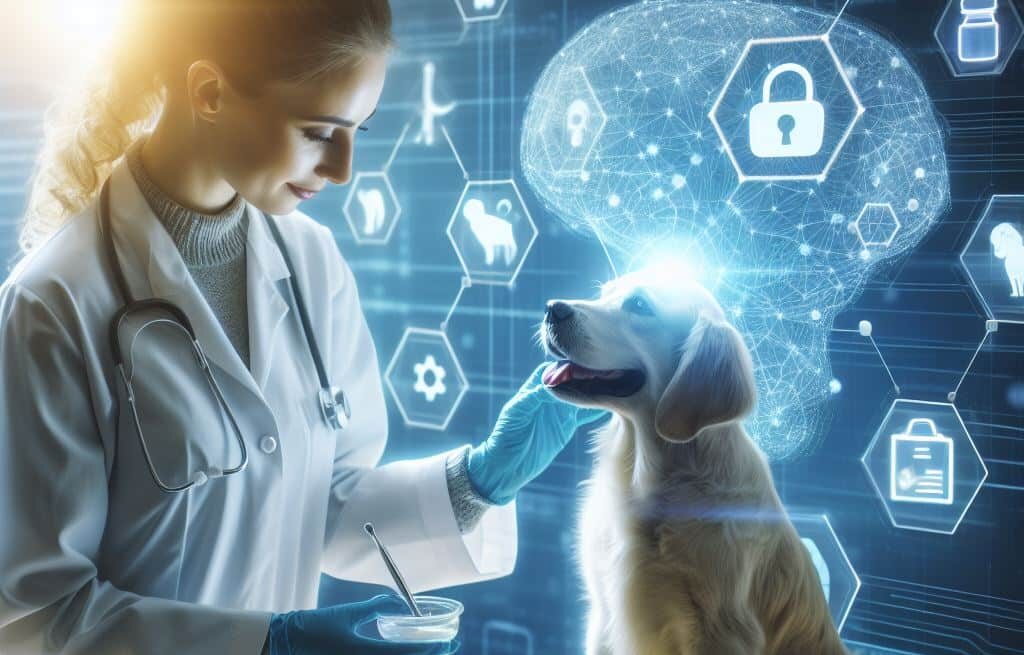
AI & Machine Learning in Veterinary Diagnostics: Where Are We Now?
Share
As we enter Q4 and turn our sights toward 2026, the veterinary industry is witnessing a rapid evolution — not just in treatment options, but in the very tools used to diagnose our patients. At the center of this shift? Artificial Intelligence (AI) and Machine Learning (ML).
These technologies are no longer futuristic concepts or startup hype. They are actively reshaping how clinics interpret diagnostic data, improving speed, accuracy, and ultimately patient outcomes. Let’s take a closer look at where we stand today — and what’s coming next.
AI in Action: Smarter Imaging, Faster Pathology
Over the past year, AI-powered diagnostic tools have moved from experimental to essential in many forward-thinking clinics. Here are just a few areas where machine learning is making an impact:
Radiology & Imaging
AI platforms can now analyze radiographs, CT scans, and MRIs in seconds — identifying fractures, lung patterns, masses, or spinal anomalies with remarkable precision.
-
Tools like Vetology AI and SignalPET provide real-time radiographic interpretations, flagging abnormalities for veterinarian review.
- AI’s consistent pattern recognition helps reduce human fatigue errors, especially in high-volume practices
Cytology & Histopathology
Digital pathology is on the rise, and machine learning models are trained to:
-
Differentiate between benign and malignant cells
-
Detect subtle cellular abnormalities
- Prioritize cases for urgent review
Lindsay et al., 2023 found that AI-assisted cytology platforms were able to identify mast cell tumors with 92% sensitivity, matching or exceeding generalist pathologist readings.
Early Adopters: Real-World Use Cases
Suburban Multi-Doctor Practice in Illinois
After integrating AI-driven radiology in early 2024, this clinic saw:
-
A 27% decrease in report turnaround time
-
Improved diagnostic confidence among newer associates
-
Reduced reliance on outsourced radiology — saving an estimated $8,000/quarter
Specialty Referral Hospital in Oregon
By partnering with an AI cytology provider, their internal medicine team improved:
-
Case triage speed, especially in oncology patients
-
Owner compliance, thanks to faster result communication
- Treatment planning with earlier histologic insights
In both examples, AI didn’t replace the veterinarian — it empowered them to make quicker, more confident decisions.
Ethics & the Veterinarian’s Role
With new tools come new responsibilities. Here are some ethical and practical considerations as AI becomes a bigger player in diagnostic workflows:
Augmentation, Not Replacement: Veterinarians still carry the responsibility of clinical judgment, context, and patient communication. AI should inform — not dictate — decisions.
Transparency with Client: Explain when AI is part of a diagnostic process, and what its strengths and limitations are. This helps build trust and manage expectations.
Validating Results: Just like any tool, AI outputs should be reviewed and validated — especially when dealing with ambiguous or complex cases. Think of AI as a highly skilled assistant, not an autonomous diagnostician.
Bias and Data Integrity: AI systems are only as good as the data they’re trained on. Veterinary professionals must understand how models are built and whether their patient populations are accurately represented.
Who’s Leading the Pack?
Several companies are driving innovation in AI veterinary diagnostics:
Vetology AI – A pioneer in AI-enhanced radiograph interpretation, and among the first to achieve FDA approval for select veterinary imaging applications. Their platform automates image reads, reporting, and clinical workflow integration to improve accuracy and efficiency.
SignalPET – Provides real-time, automated analysis of over 50 radiographic conditions using proprietary machine learning algorithms. Designed for point-of-care use, it delivers instant, standardized interpretations to support faster decision-making.
ScopioVet – Specializes in AI-driven digital cytology, offering rapid sample analysis and remote pathologist review. Its advanced imaging and AI tools reduce cytology turnaround times from days to minutes, enhancing in-clinic diagnostic capabilities.
AniML – A new entrant integrating AI pathology, radiology, and EHR data to provide holistic patient assessments. Its approach emphasizes unified, multi-modal insights that connect lab data, imaging, and case history for more informed care.
And of course, CenterPoint Bio Tech – AlphaION System's
A modular, AI-integrated laboratory platform that unites multiple diagnostic modalities into a single system - composed of five modular analyzers delivering eight core laboratory functions. Includes blood gas and chemistry testing, hematology, bio-sensing, urine and fecal microscopy, and culture and sensitivity testing.
Standing out from the pack by providing a comprehensive, AI-enhanced diagnostic ecosystem, merging molecular, biochemical, and microscopic data in a single integrated platform.
